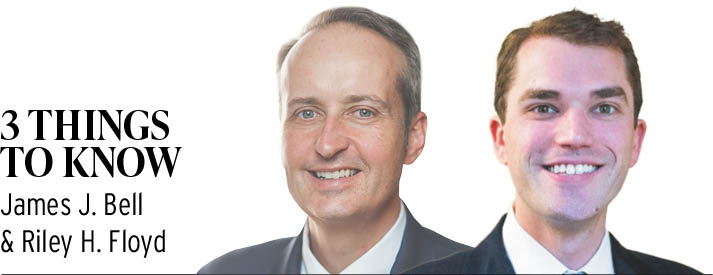Subscriber Benefit
As a subscriber you can listen to articles at work, in the car, or while you work out. Subscribe Now Decades after email revolutionized the way lawyers communicate, the tool we now routinely use continues to present ethical quandaries. The latest proof of concept? American Bar Association Formal Ethics Opinion 503 on the ethical implications of “reply all,” the potentially efficient but occasionally hazardous feature that clogs inboxes everywhere, can lead to cringeworthy gaffes and is here to stay — unless you or your firm remove it from your Outlook toolbar. (Yes, that’s actually a thing.)
Decades after email revolutionized the way lawyers communicate, the tool we now routinely use continues to present ethical quandaries. The latest proof of concept? American Bar Association Formal Ethics Opinion 503 on the ethical implications of “reply all,” the potentially efficient but occasionally hazardous feature that clogs inboxes everywhere, can lead to cringeworthy gaffes and is here to stay — unless you or your firm remove it from your Outlook toolbar. (Yes, that’s actually a thing.)
Here are three things to know about “replying to all” and other areas of email etiquette.
1. Copying the client on an email to opposing counsel could constitute implied consent to opposing counsel’s communication with the client via reply all. Rule 4.2 is fairly straightforward. It says that a lawyer shall not communicate with a represented party unless the represented party’s lawyer consents to that communication. What happens when the attorney or the represented party emails you and CC’s his or her client on the email? Is that lawyer now consenting to your communications with the client? According to ABA Opinion 503, the answer is “yes.”
ABA Opinion 503 concludes that copying the client on an email to opposing counsel creates a presumption of implied consent to opposing counsel’s communication with the client. Despite contrary state ethics opinions concluding that implied consent should be based on multiple facts and circumstances, the opinion concludes that its result provides “a brighter and fairer line.” It places responsibility with the sending lawyer rather than the receiving lawyer (who, for an email with a lengthy distribution list, may not realize the opposing party is copied).
With regard to Indiana’s Rules of Professional Conduct, the text of our Rule 4.2 is identical to the text of the model rule. “Unless otherwise explicitly agreed, the consent covers only the specific topics in the initial email … .” In the wrong case, this creates only more disputes. The opinion notes exceptions to the presumption of consent: informing receiving counsel at the beginning of the email or in a separate, earlier email that the sending lawyer does not consent to a reply all. The opinion makes no mention of clawbacks.
The presumption is innocuous enough for a simple “thanks” or a “logistical” reply. But the presumption also creates potentially troubling opportunities for opposing counsel to use your email strategically to communicate or signal a more substantive message to your client. The opinion appears to have anticipated this possibility: It notes that the content of opposing counsel’s reply remains subject to other rules like Rule 4.4 (which prohibits intruding on the privilege) and Rule 8.4 (which prohibits misrepresentations).
2. Other problems: Copying the client on an email also provides the client with an opportunity to ‘reply all.’ Copying the client also creates another risk: an otherwise privileged reply from the client — what the opinion calls an “imprudent reply … with sensitive or compromising information.” These risks exist whether the client is CC’d or BCC’d because, as the opinion notes, some email systems will send a BCC recipient’s reply to all recipients, not just the sender. The opinion notes that the “better practice” is not to copy the client at all and, instead, to forward the communication to the client separately. Even then, practitioners have several choices, some riskier than others: attach the outbound email to a separate email to the client; forward the email to the client; or copy and paste the text of the original outbound email into a new email and send separately.
3. Consider whether the email should be an email at all. Should you instead send a letter? Or pick up the phone? Pausing to answer these questions can be helpful in other contexts, too.
The ABA opinion expressly limits the presumption to emails and texts that the lawyer initiates. The presumption does not apply to letters sent by traditional mail because “(t)here is no prevailing custom indicating that by copying a client on a traditional paper letter, the sending lawyer has impliedly consented to the receiving counsel sending a copy of the responsive letter to the sending lawyer’s client.” The opinion does not discuss the ubiquitous practice of emailing a PDF of a letter on letterhead.
The opinion highlights the value of asking ourselves a simple question before sending that next email: “Are you sure?” After all, anyone’s next email could be fodder for the ABA’s next ethics opinion.•
__________
James J. Bell is a partner and Riley H. Floyd is an associate at Hoover Hull Turner LLP in Indianapolis. Opinions expressed are those of the authors.
Please enable JavaScript to view this content.
